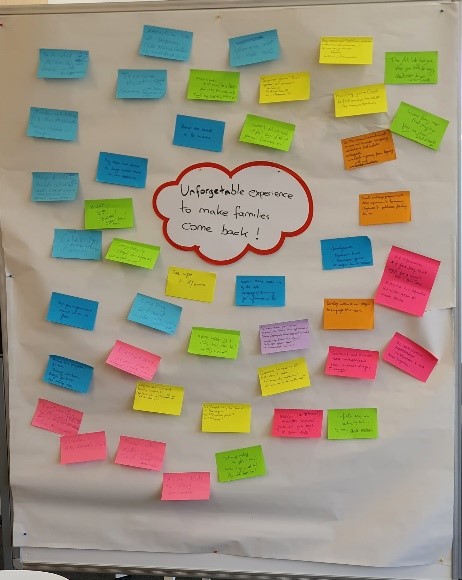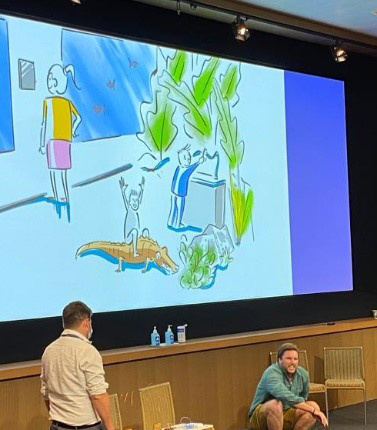During the Innovation Week that has just drawn to a close, teams of IMD MBA participants were asked to approach a business problem in a non-businesslike way. Aquatis, Europe’s largest freshwater aquarium-vivarium, wanted to improve its customers’ experiences to drive repeat visits and therefore solicited “innovative” proposals from the IMD cohort.
But what is innovation? “Innovation” is often defined in terms of developing new and useful processes or products. At IMD’s Innovation Week, however, we conceptualized innovation as a mindset and an emergent team behavior. Part of the challenge, then, was to inspire and “perform” creativity, playfulness, and imagination. And after a week of exploration and brainstorming, the IMD teams presented diverse ideas and concepts to a delighted Aquatis leadership team.
Innovation: from inspiration (at museums and zoos) to ideation (with diverse teams) to performance (for board members and potential investors!)
In the aftermath of these presentations, we were also asked by Leadership professors Alyson Meister and Jennifer Jordan to reflect on our team dynamics, and to evaluate our teams’ formation, learning processes, and internal dynamics. What made our teams over or under-perform, and what was the relationship between team effectiveness and innovation? We sought to answer these questions with balanced feedback, sharing “something to continue” and “something to consider” with each teammate.

Another essential element of an innovative mindset that the IMD teams discovered was mindfulness, or living in the moment, free of any binding mental models, schedules, or rulesets. Creativity demands both forgetfulness and openness. This was challenging for many MBA candidates, particularly those who were accustomed to living within structures and paced against deadlines. Balanced against this, we sought the spirit that Buddhist monk Thích Nhất Hạnh described in his Phép lạ của sự thức tỉnh (“The Miracle of Mindfulness”):
“People usually consider walking on water or in thin air a miracle. But I think the real miracle is not to walk either on water or in thin air, but to walk on earth. Every day we are engaged in a miracle which we don’t even recognize: a blue sky, white clouds, green leaves, the black, curious eyes of a child—our own two eyes. All is a miracle… many people are alive but don’t touch the miracle of being alive.“
By living more in the actual moment, and looking at the world with a certain slowness and reverence, the IMD teams were able to develop diverse and creative proposals for the Aquatis leadership – proposals that would engage the five senses, provide tactile or interactive experiences, and fully address the “now” of the customer. In this way, aesthetics and philosophy were harnessed to serve practical business needs.



